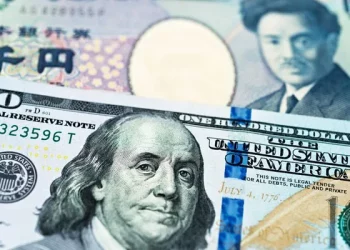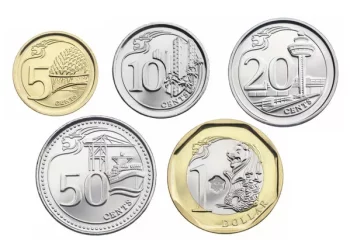In the world of foreign exchange trading, the relationship between different currencies plays a crucial role in global economics. For many traders and investors, understanding exchange rates is vital for making informed decisions when trading or investing in foreign markets. One such relationship that often piques the interest of traders is the exchange rate between the Swedish Krona (SEK) and the Indian Rupee (INR). This article aims to provide a comprehensive look at how much the Krona is to the Rupee, the factors influencing their exchange rate, and the implications for traders and investors alike.
The Swedish Krona and the Indian Rupee: An Overview
Before diving into the exchange rate between the Swedish Krona and the Indian Rupee, it’s essential to understand what these two currencies represent.
Swedish Krona (SEK):
The Swedish Krona is the official currency of Sweden, a country located in Northern Europe. Its currency code is SEK, and its symbol is “kr”. The Swedish Krona is issued and regulated by the Sveriges Riksbank, Sweden’s central bank. Sweden has a well-developed economy, characterized by its advanced technology sector, manufacturing, and export-oriented industries. Although Sweden is a member of the European Union, it has chosen not to adopt the Euro and continues to use the Krona as its national currency.
Indian Rupee (INR):
The Indian Rupee is the official currency of India, a country located in South Asia. Its currency code is INR, and its symbol is “₹”. The Indian Rupee is issued by the Reserve Bank of India (RBI), the country’s central bank. India, with its large and diverse economy, is the world’s fifth-largest economy by nominal GDP and the third-largest by purchasing power parity (PPP). The Indian Rupee is an essential currency for traders involved in the South Asian and emerging market regions.
The Exchange Rate Between Krona and Rupee
As of the latest available data, the exchange rate between the Swedish Krona (SEK) and the Indian Rupee (INR) can fluctuate based on various economic and geopolitical factors. On any given day, one can check the current exchange rate to determine how much one unit of SEK is worth in INR.
The exchange rate between the Krona and the Rupee typically reflects the supply and demand dynamics for each currency, which are influenced by several factors:
Interest rates: Central banks set interest rates, which can have a direct impact on a currency’s strength. If Sweden’s central bank raises interest rates, the Swedish Krona may appreciate against other currencies, including the Indian Rupee.
Economic data: Economic indicators such as GDP growth, inflation, and unemployment rates can influence investor sentiment towards a country’s currency. A strong economy in Sweden might cause the Krona to appreciate, while economic challenges in India could lead to a weaker Rupee.
Global events: Political instability, trade negotiations, and geopolitical events can lead to currency fluctuations. For example, if there is uncertainty surrounding trade relations between Sweden and India, it could affect the SEK-INR exchange rate.
Market sentiment: Traders in the foreign exchange market often act based on sentiment and speculation, which can lead to short-term fluctuations in the exchange rate. If investors believe that Sweden’s economy will outperform India’s economy, the SEK may rise relative to the INR.
It is important to note that exchange rates between currencies such as SEK and INR can also be influenced by market liquidity and the size of the foreign exchange market in each country.
Current Exchange Rate Between SEK and INR
At any given time, the value of one Swedish Krona in Indian Rupees may vary. Currency pairs such as SEK/INR are constantly traded on the foreign exchange markets, and their value can shift every second as traders buy and sell currencies based on their predictions of future economic conditions.
Let’s say, hypothetically, the current exchange rate is 1 SEK = 8.20 INR. This means that for every Swedish Krona, you would receive 8.20 Indian Rupees. The exchange rate is determined by the market’s supply and demand for SEK and INR, as well as broader economic conditions affecting both countries.
Traders and investors keep a close eye on currency pairs like SEK/INR for trading opportunities. By monitoring fluctuations in exchange rates, they can capitalize on movements in the foreign exchange market. However, it’s important to understand that these rates can vary between different forex brokers and financial institutions.
Factors Affecting the SEK/INR Exchange Rate
Several key factors influence the exchange rate between the Swedish Krona and the Indian Rupee:
1. Interest Rate Differentials
One of the most influential factors in the foreign exchange market is the difference in interest rates between two countries. The central banks of Sweden (Sveriges Riksbank) and India (Reserve Bank of India) set interest rates to manage inflation and stimulate or slow down the economy. A higher interest rate in Sweden may attract foreign investment, increasing demand for the Swedish Krona and pushing up its value relative to the Indian Rupee.
For instance, if the Swedish central bank raises its interest rates while the Reserve Bank of India maintains lower rates, investors may move their capital to Sweden to earn better returns, resulting in an appreciation of the Swedish Krona against the Indian Rupee.
2. Inflation Rates
Inflation is another critical factor in exchange rate movements. Countries with lower inflation rates generally see their currencies appreciate over time, as their purchasing power remains relatively strong compared to countries with higher inflation.
If Sweden has a lower inflation rate than India, the Swedish Krona will likely appreciate against the Indian Rupee. On the other hand, higher inflation in India can erode the value of the Rupee, making the SEK stronger in comparison.
3. Trade Balances
A country’s trade balance also plays a role in determining the value of its currency. If Sweden has a trade surplus (exporting more than it imports), it can lead to an appreciation of the Swedish Krona, as foreign buyers need to exchange their currencies for SEK to purchase Swedish goods and services.
On the other hand, India has historically run a trade deficit, importing more than it exports, which could contribute to a weaker Indian Rupee. A persistent trade imbalance in India may put downward pressure on the INR against the SEK.
4. Economic Growth and Stability
The overall economic health of a country is a crucial determinant of currency strength. Sweden’s strong economic fundamentals, high standard of living, and stable political environment tend to support the value of the Swedish Krona. Conversely, India’s rapidly growing but sometimes volatile economy and its large fiscal and trade deficits can put pressure on the Indian Rupee.
Economic reports, such as GDP growth rates and consumer confidence, play a role in determining the future outlook for the SEK/INR exchange rate. For example, if Sweden reports strong GDP growth while India faces economic challenges, the SEK may appreciate against the INR.
5. Political Events and Geopolitical Risks
Political events can have a significant impact on exchange rates. If there is political instability in India or Sweden, it may cause currency fluctuations. For instance, unexpected elections, policy changes, or civil unrest can lead to uncertainty in the market, causing investors to pull back from riskier assets and currencies like the Indian Rupee.
Geopolitical risks, such as trade tensions between Sweden and India, or even broader global factors like oil price fluctuations or global recessions, can lead to volatility in the SEK/INR exchange rate.
How to Convert Swedish Krona to Indian Rupee
For individuals looking to convert Swedish Krona (SEK) to Indian Rupee (INR), the process is relatively straightforward. The current exchange rate determines how much INR you will receive for each unit of SEK.
For example, if the exchange rate is 1 SEK = 8.20 INR, and you have 100 SEK, you would receive:
100 SEK×8.20 INR=820 INR
It’s important to note that when converting currencies, financial institutions such as banks, forex brokers, and currency exchange services may apply fees or offer slightly different exchange rates based on market conditions.
Forex Trading with SEK/INR
For forex traders, trading the SEK/INR currency pair can be a lucrative opportunity, provided they understand the risks and market dynamics involved. Forex trading is highly speculative and involves significant risks, including the potential for loss. Traders typically use technical analysis, chart patterns, and economic indicators to predict the direction of currency movements.
To trade SEK/INR, you would need to open a forex trading account with a broker offering this currency pair. From there, you can place trades by buying or selling SEK against INR, aiming to profit from short-term price fluctuations.
Conclusion
Understanding the exchange rate between the Swedish Krona and the Indian Rupee is essential for traders, investors, and anyone engaged in international business or travel between Sweden and India. While the SEK/INR exchange rate is influenced by various factors, including interest rates, inflation, trade balances, and geopolitical events, it remains a volatile and dynamic pair in the forex market.
Whether you’re looking to exchange currency for travel purposes, or you’re an investor or trader seeking opportunities in the foreign exchange market, knowing how the Swedish Krona compares to the Indian Rupee can help you make informed decisions. Keep in mind that exchange rates can fluctuate rapidly, so staying up to date with global economic conditions is key to navigating the forex market effectively.
Finally, regardless of whether you’re trading or converting currency, always ensure you’re using reliable sources and institutions to get the best rates and avoid unnecessary fees. In the fast-paced world of foreign exchange, even a small difference in exchange rates can make a significant impact on your financial outcomes.
Related Topics:



























